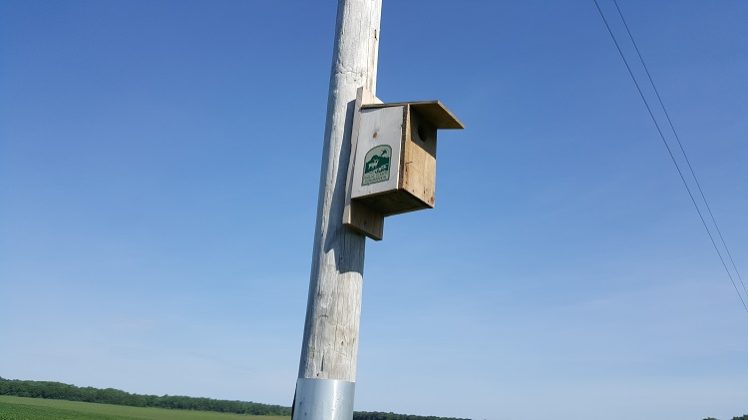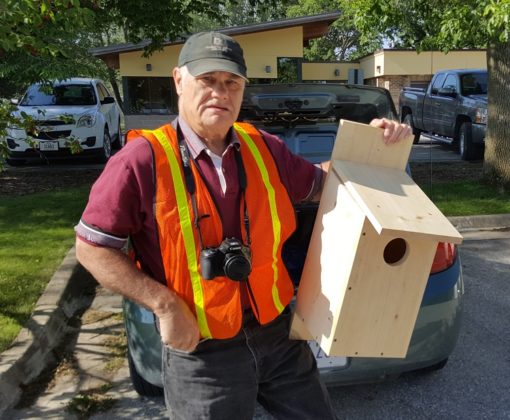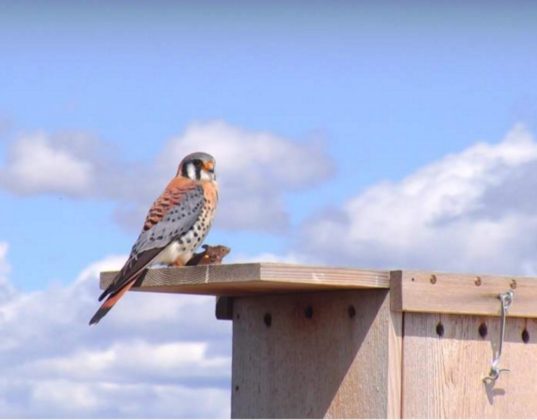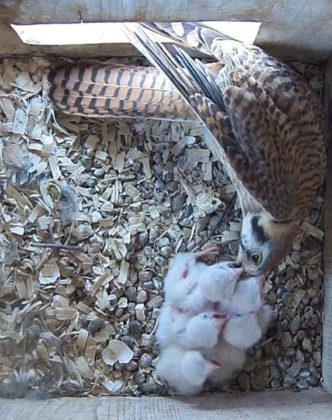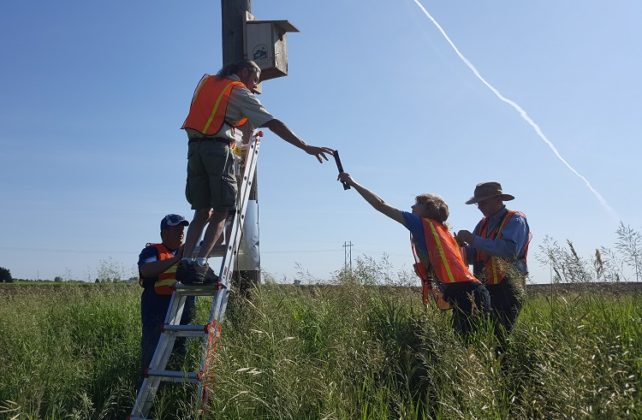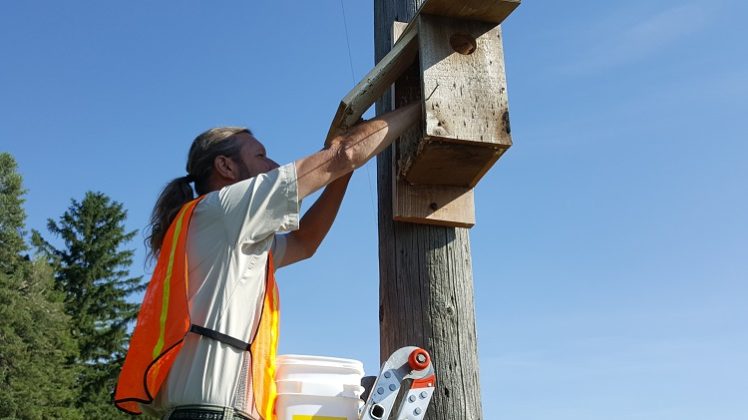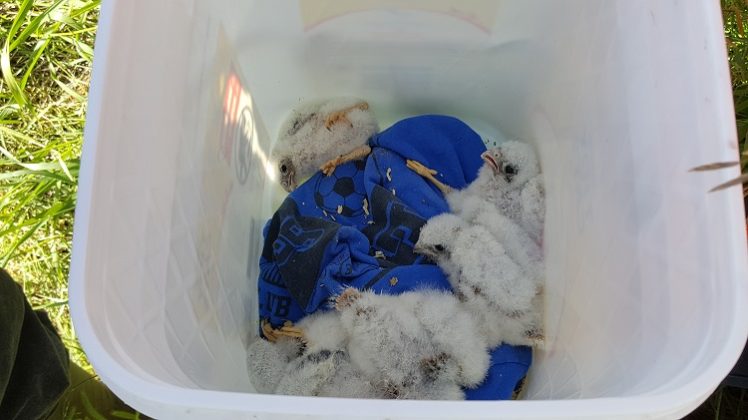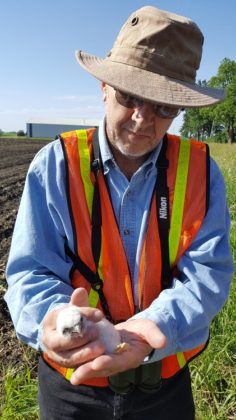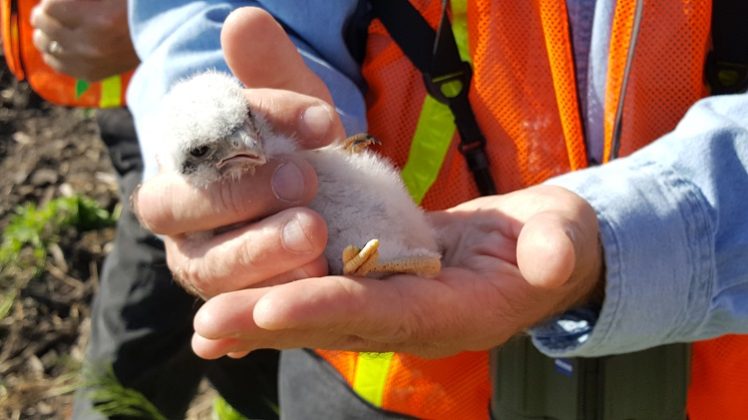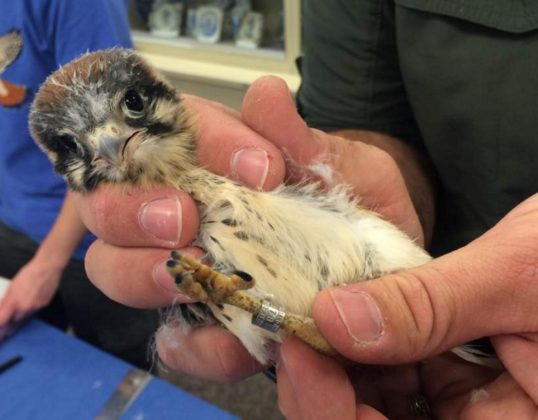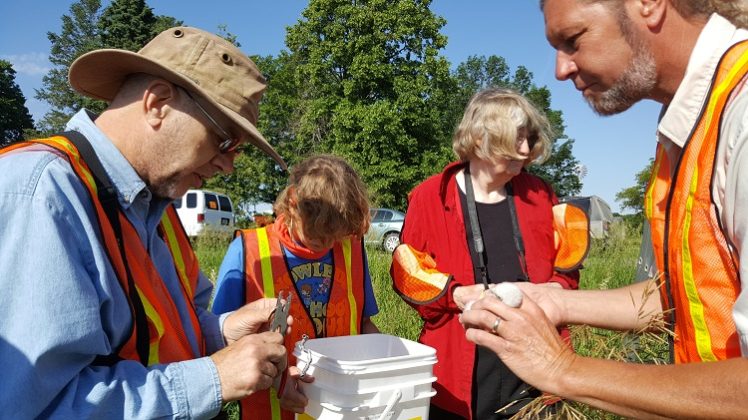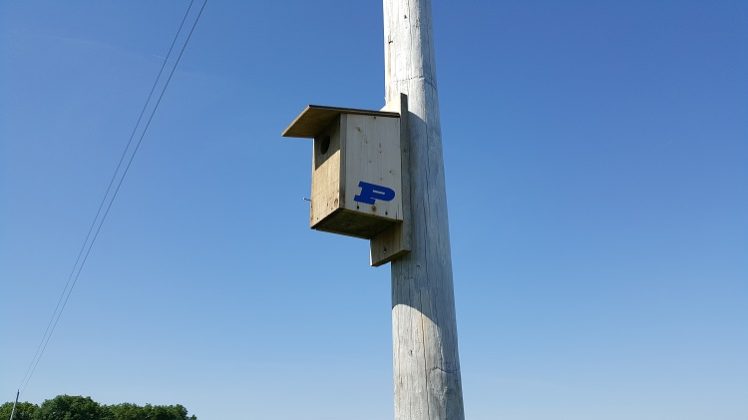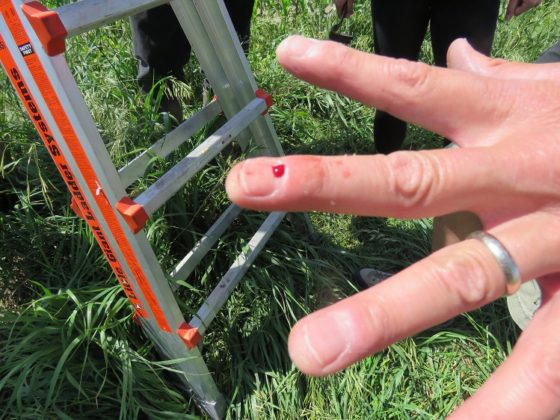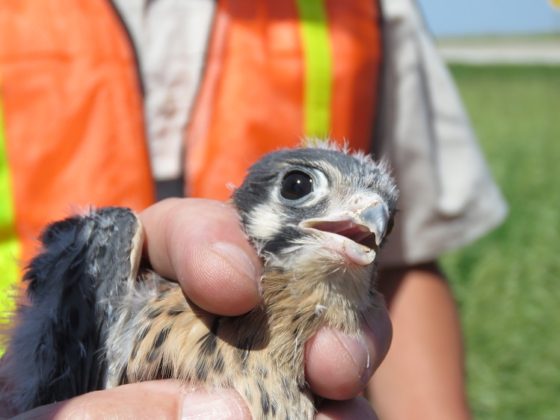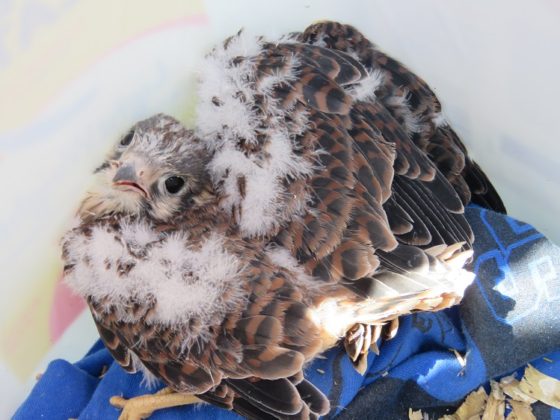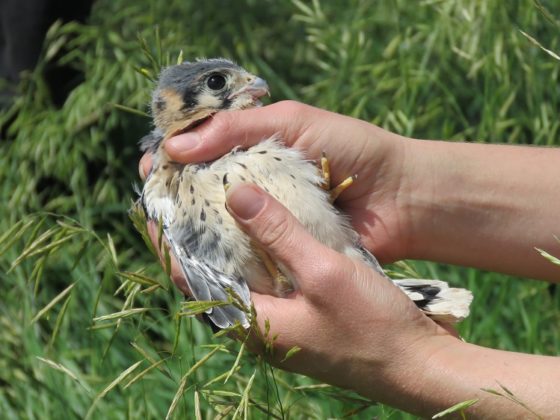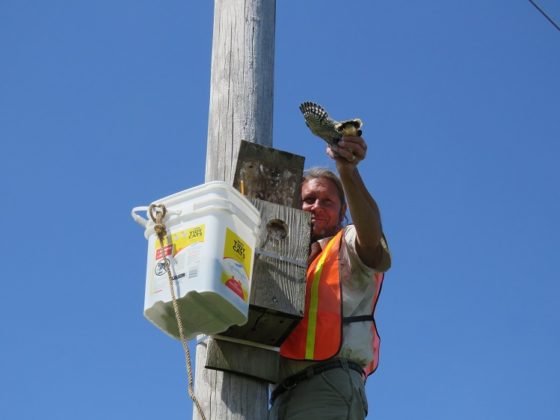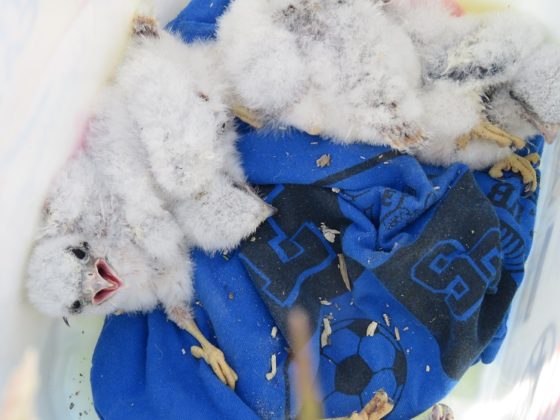Editor’s note: Dallas County Conservation Department Naturalist Mike Havlik led a group of five volunteers Wednesday in the latest phase of the kestrel box project, a coordinated effort of county conservation and the Perry High School science department. The project aims to help a bird species under pressure from human activities.
Havlik was joined by Newton naturalist Mark Bowman, PHS biology teacher Jeff Fox, Iowa State University Ph.D. student Amy Geffre and local birders and nature enthusiasts Ray and Margaret Harden of Perry.
The group set out from Forest Park Museum near Perry at 9 a.m. with the goal of attaching metallic bands to the little legs of nestling kestrels whose parents have set up housekeeping in kestrel boxes constructed earlier this spring by Perry Middle School students and mounted on poles around Dallas County.
Wednesday’s banding of the kestrel chicks was a follow-up to the banding of adult kestrels that took place in May with the help of Fox’s PHS biology students. Kestrels are small falcons that are in decline around much of the United States, but in the Midwest their numbers have increased 19 percent in recent years due in part to kestrel box projects.
ThePerryNews.com Naturalist Ray Harden filed the following report on the project:
I was invited to take part in the American kestrel banding project in early June with Mike Havlik from the Dallas County Conservation Department, Mark Bowman, a volunteer for the U.S. Fish and Wildlife Service, Perry High School biology teacher Jeff Fox and Iowa State University Ph.D. student Amy Geffre.
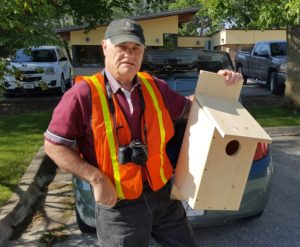
Havlik had checked the kestrel nests several weeks earlier. These are large boxes on utility poles in the Perry and Minburn area. He knew that some of the kestrel chicks would be ready to band and the information used for future scientific research.
The American kestrel is a bird commonly seen in central Iowa along roadways, sitting on electrical wires or hovering above the ditches as it hunts for food. It is sometimes called a sparrow hawk. It is slightly larger than a robin, 10.5 inches long and with a wingspan of 23 inches.
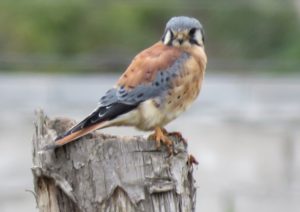
Both sexes are the same size. Their unique feature is their face. There are two black streaks on their white cheeks. The male’s wings are a blue-gray color while the female’s are all brown. The male can be recognized in flight by the white spots on the back edge of its wing.
The female has brownish-orange stripes on her breast while the male has a light orange breast with dark spots.
Both are very handsome birds.
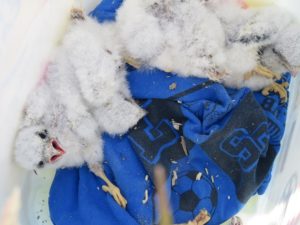
The first box that was examined had five chicks covered with downy white feathers. They were less than a week old, but they squealed loudly and were trying to defend themselves. Their claws were raised and their beaks opened in a threatening defensive position. They were all quickly fitted with a U.S. Fish and Wildlife leg band by Geffre and Bowman and returned unharmed to their nest.
The second box examined was 1.5 miles away. Havlik climbed the ladder, opened the box and reported there were four very recently hatched birds that were too young to handle and band. He closed the box, and we moved on to the next box.
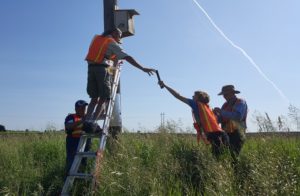
Havlik climbed the ladder to check the third nest, and he was about to look inside when an adult bird flew out of the hole, giving him quite a start. The box only had one buff colored egg. The female will lay two or three more and after a month of incubation, they will hatch.
Our next stop was the Voas Nature Area near Minburn. Kestrels had been seen for several days perched in a nearby tree and flying into the box. Havlik was sure there was a nest. However, when he opened the lid, it was deserted. It appeared a raccoon had destroyed the nest.
This mated pair of kestrels might breed again and try to raise a brood.
At the fifth nest site, four babies were found inside, about 18 days old. There were two males and two females. The most developed male flew when the box was opened but made a soft landing in the tall brome grass.
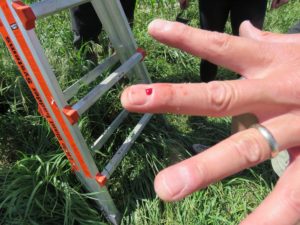
Geffre easily caught it and held it for Bowman as he put a band on its leg. When it was being returned to the box, the little kestrel dug its talon into Havlik’s finger deep enough to draw blood.
The remaining birds were going to be banded, but the banding tool broke and couldn’t be repaired in the field. The other three nestlings were banded later.
Man-made nesting boxes are very helpful for kestrels. They naturally nest in cavities in hollow trees, but they face a lot of competition from many other birds, especially starlings.
The American kestrel population across the U.S. is down 47 percent, but in Iowa the birds have increased their numbers by 19 percent. This increase is due to man-made nesting boxes placed around the state. More than 750 boxes were attached to the back of road signs along U.S. Interstate 35 in Iowa several years ago.
The Dallas County Conservation Department has maintained boxes in the county for several years. The Perry High School Advanced Biology Class made six new ones to replace the worn boxes and add new boxes.
To help with project,students in the Perry Middle School shop class made 40 as part of a mass-production learning project. When these boxes are placed around the county, it will greatly help one of Iowa’s most handsome birds of prey: the American kestrel.
Did you like this story? Please support our daily coverage of local news and sports with a one-time donation or a recurring donation of $5 per month.









